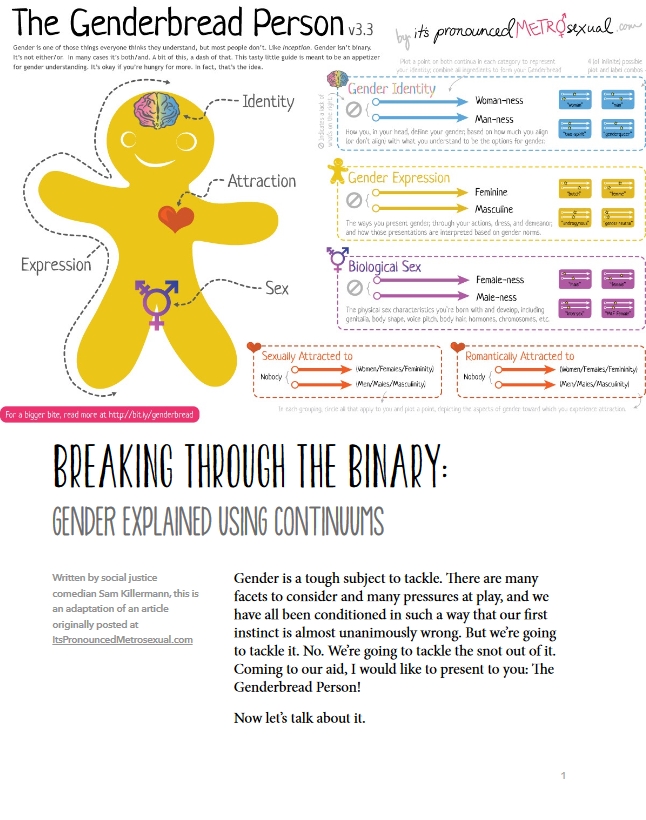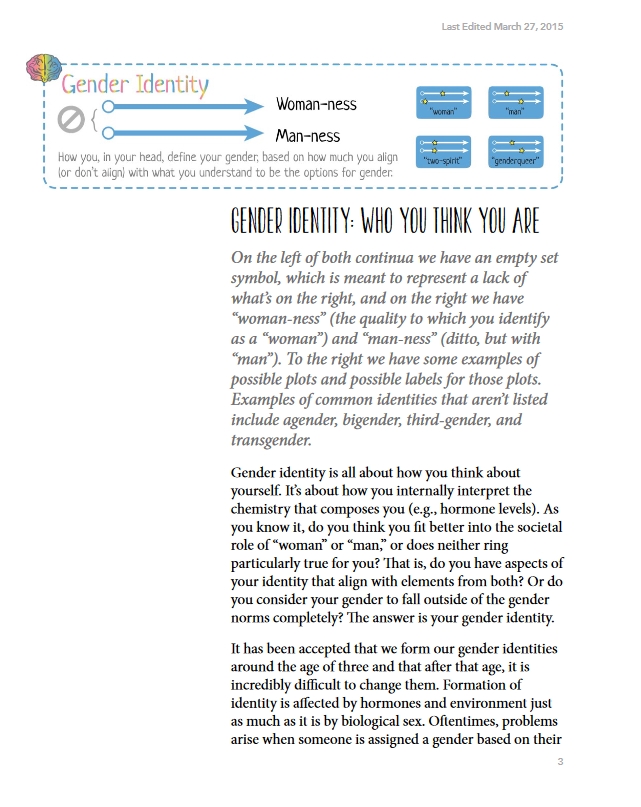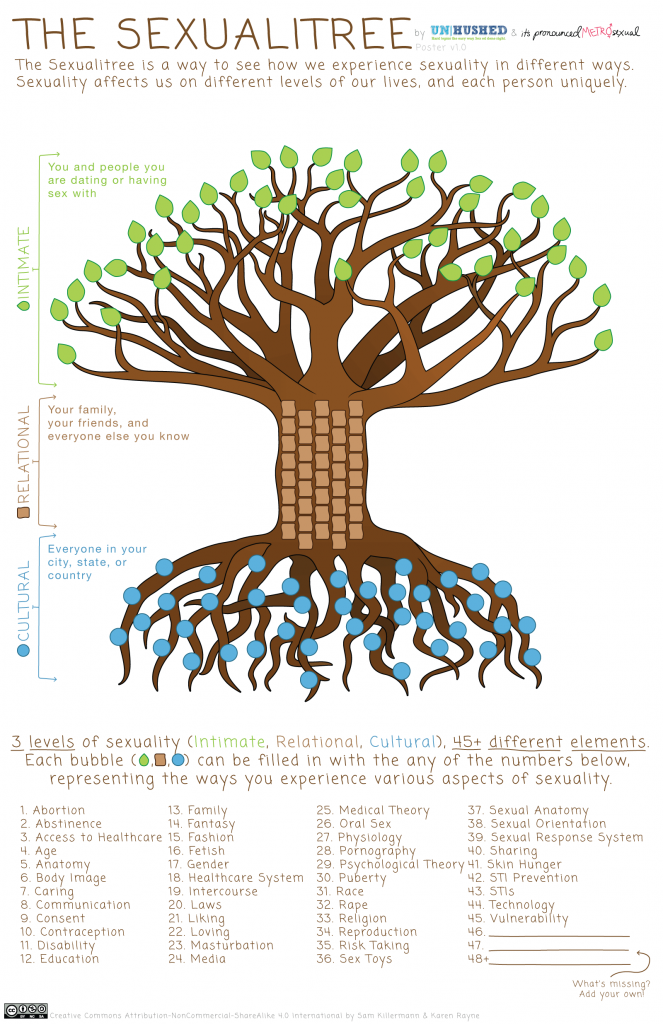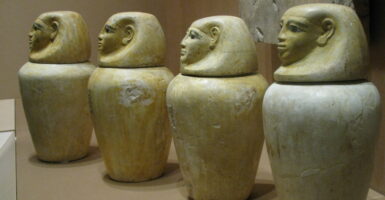What Is The Genderbread Person And How Is It Being Used In Schools?
ex education in public schools across the nation has changed a lot over the past few decades. Things used to be cut and dry, without any gray areas in between. Today, though, gender identity seems to be the main talking point around sex education and kids are learning this information younger than ever before. To assist them, students are being introduced to the Genderbread Person.
Sex education in public schools across the nation has changed a lot over the past few decades. Things used to be cut and dry, without any gray areas in between. It’s just one of the reasons folks are opting out of public school, something you can read all about in our Ultimate Guide to Homeschooling. Today, though, gender identity seems to be the main talking point around sex education and kids are learning this information younger than ever before. To assist them, students are being introduced to the Genderbread Person.
What Is The Genderbread Person?
If you are not aware of what the Genderbread Person is, the concept was introduced by Sam Killermann back in 2011 as an accompaniment to an essay he wrote. Killermann calls his creation “a cute, approachable model for understanding the social construction of gender, based on the input of thousands of voices over several decades.” Over the years since its first introduction, Killermann has made a few adjustments to his Genderbread Person, but for the most part, the concept has remained the same.
So, what exactly is the Genderbread Person? In the image below, you can see that Killermann’s description is quite accurate. Cute and approachable, the image immediately reminds one of the tragic folktale called the Gingerbread Man, where the Gingerbread Man finally meets his demise in the jaws of a wolf. Thankfully, the Genderbread Person meets no such fate.

The Genderbread Person, in this instance, is a learning device whose goal is to break down gender into pieces that are identifiable. The purpose is to teach kids that there is more to gender than meets the eye. Gender, in the Genderbread Person’s estimation, is not a physical trait, but one where what you think is who you are.
What Are The Parts Of The Genderbread Person?
As you can see in the above illustration, the Genderbread Person is broken into four areas. These are identity, attraction, expression, and finally sex. Under Gender Identity, kids are taught how, in their head, to define their gender. This is to be based on what students either align with or don’t align with what they understand their gender options are.
Gender Expression teaches students about outward appearance. They are ways you express yourself by the way you dress, by the way you act, your physical demeanor, and how you present these based on gender norms.
Attraction falls into two categories or definitions. One is who you are sexually attracted to. The other is who you are romantically attracted to. Is sexual attraction different than romantic attraction? The Genderbread Person aims to answer that question.
Finally, there is Sex. This is your physical sex, your biological sex. These are the characteristics you are born with – genitalia, voice, body shape, hormones, and chromosomes – but they, according to the Genderbread Person and its teachings, do not define who you are.

The advent of the Genderbread Person, on the whole, is something that many agree is a wonderful idea. It can help those who may have questions and are in need of answers. But the question, and in many cases the issue, revolves around when these concepts should be introduced in school. In fact, there are many out there asking if the concept even has a place in schools.
Where Is The Genderbread Person Used?
There are a number of states who have employed the Genderbread Person as a teaching tool. California, Massachusetts, and Arizona are just a few states where the Genderbread Person has popped up and it has been seen in grades as low as 4th. But how young is too young? According to the website Mama Bear Apologetics, they claim that gender identity is taught even as young as kindergarten. They even reference a lesson plan titled Genderbread Person and LGBTQ Umbrella. Per the lesson plan, Mama Bear Apologetics quotes it as defining gender in 3 distinct parts.
“Gender is best understood when broken up into three parts: gender identity (which is how you, in your head, define and understand your gender based on the options for gender you know to exist), gender expression (the ways you demonstrate gender through your dress, actions, and demeanor), and biological sex (the physical parts of your body that we think of as either male or female). Let’s talk about these one-by-one.” By the way Mama Bear Apologetics presents the material regarding the teachings of gender identity in elementary schools, they are clearly not on board with it. They are not alone.
Mary Ellen Siegler is from the Massachusetts Family Institute and explained via an email to the New Boston Post that not only is the Genderbread Person teachings confusing for children, but it is also lying to them by denying biological reality. In part, she said, via an email to the New Boston Post: The presenter said so many alarming and false statements that I could barely keep up taking notes. There was absolutely nothing scientific about the assertions being made, and yet they were presented as undisputed facts. She then continued on, simply flabbergasted. Things like if a person thinks in their mind they are a female, but they are anatomically male, the brain cannot be changed, so their body must be changed. I couldn’t believe what I was hearing. Children are being confused about their sex by presentations like these.

But not everyone is on the same side as Mama Bear or Ms. Siegler. The Safe Zone Project has devised a teaching curriculum that incorporates the Genderbread Person. They offer the entire package, from materials needed to set up to teacher framing and goals and learning outcomes. Others who have used these teachings in class have concluded that familiarity with the Gingerbread Man makes the discussion much easier. As one teacher commented, “We display Genderbread Person on the overhead, then talk about how this is a cookie… Then we say it doesn’t really have a set gender. And that even if it did, that doesn’t determine its sexuality.”
What Is The Sexualitree?
The Sexualitree comes from Sam Killermann and Karen Rayne, the creators of the Genderbread Person. It’s their most recent visual aid in this space, hoping to make sense of, and teach sexuality to learners in a way that helps make sense of what can be a very confusing subject. Essentially, the Sexualitree is laid out like it sounds, in the picture of a tree that breaks sexuality into three parts: cultural, relational, and intimate.

The goal with this visual aid is much like the Genderbread person in that the creators are hoping to give folks a chance to see sexuality in a different light, allowing them to group feelings around different pieces into each section. The Sexualitree asks users to look at the 45 (or so) different topics related to sexuality and to put them in the different leaves of the tree depending on how the person feels about each.
The three groups on the tree are labeled to help describe each. Cultural refers to the larger population, people in the city, state, or country one lives. Relational hones in on the people a person knows and has contact with on a regular basis. This would be family, friends, peers, and colleagues. And there is the intimate tier, defined by those you are engaged with on a sexual level (dating, etc). In this way, the creators are hoping to show that sexuality is across something of a spectrum, not necessarily always defined just on the intimacy level.
And like the Genderbread Person, the Sexualitree is geared towards discussion, trying to reframe what was once a taboo topic into terms students can begin to understand. The goal, of the creators, is to create comfort in this kind of discussion, normalizing the idea and also giving a window into a possible paradigm shift around sexuality as a whole. There’s been some controversy about this, and whether it should be taught in schools. It’s likely to continue being a hot-button topic in the short-term at least.
What are your thoughts on the Genderbread Person and the Sexualitree? Are these the kinds of visual aids you think should be on display in schools? Are they helpful to young learners?



